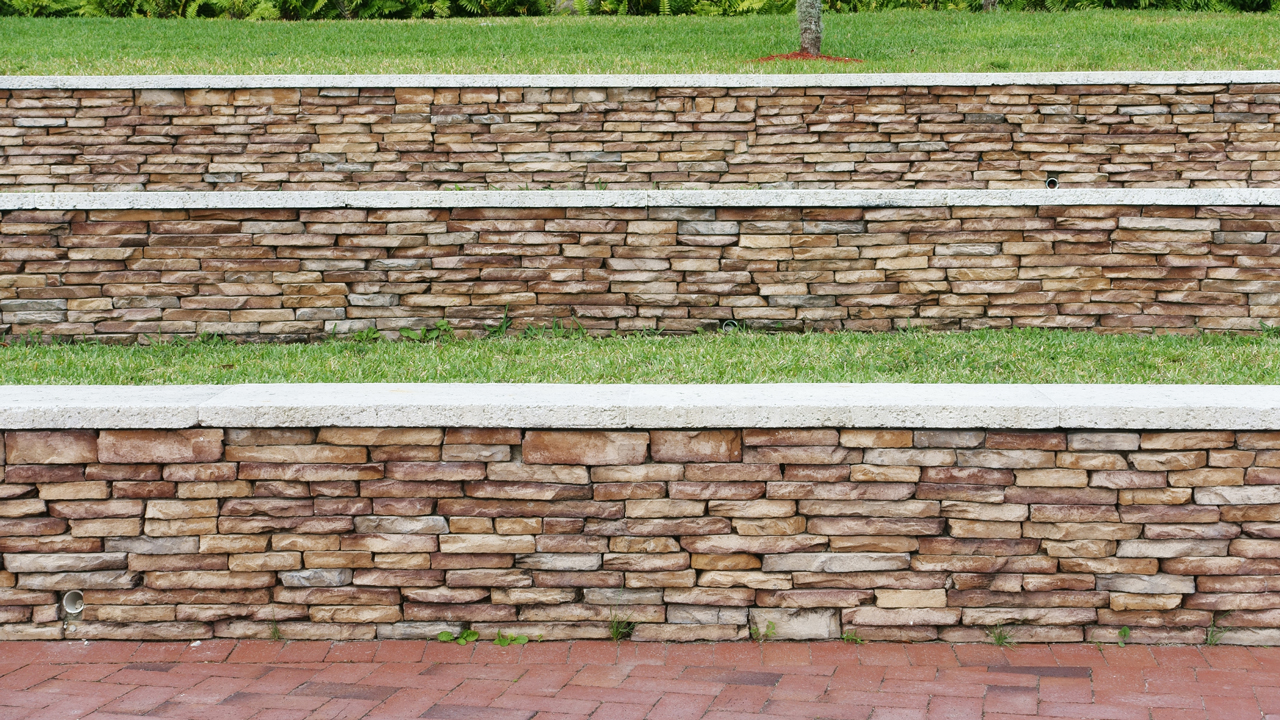
Hardscape contractors install retaining wallsRetaining walls are structures designed to hold back soil and prevent erosion in landscapes with var... to control runoff from rainwater by creating terraced levels in the garden bed. You can also make your yard more sophisticated and pleasing to the eye with this outdoor feature, which presents countless unique ideas for every budget and taste.
However, retaining walls are often overlooked when landscaping our gardens. In addition to serving an aesthetic purpose, a well-designed retaining wall makes your garden more functional. Among their many benefits, these walls prevent soil erosion and provide strength for your garden.
The following are four ideas for retaining walls you should try.
The function of a retaining wall is to hold back or retain any material and prevent it from sliding or eroding—usually soil. In other words, it is designed to hold back material by resisting its pressure. It accomplishes this by reducing the slope of a yard and retaining soil that would otherwise be washed away by rain.
The purpose of retaining walls is both functional and aesthetic. The use of these tools has become increasingly popular in landscaping design since they add visual interest to the landscape. There are even some homeowners who consider a retaining wall the focal point of their front yard.
Retaining walls can be constructed from many different types of materials, including concreteConcrete is a composite material made from a mixture of cement, sand, gravel, and water. It is one o... blocks, poured concrete, treated timber, rocks, and bouldersBoulders are large rocks, typically larger than cobbles, used in landscaping for their dramatic visu.... They also come in a variety of neutral colors, including white, beige, gray, and more. They may differ in ease of use and longevity, but all are capable of retaining soil.
These structures serve as both a functional landscaping element and a decorative design element. No matter what your situation is, whether you're working with a hardscape contractor to install a wall or to repair one that already exists, you'll get the most out of your outdoor space by considering these retaining wall ideas.
If you're building a retaining wall, interlocking blocks are the easiest option. You can buy several kinds of interlocking bricks that fit together and lock in place so you never have to worry about adding mortarMortar is a mixture of cement, sand, and water, used as a bonding agent in masonry construction. It ... or adhesive. This project will require a bit of digging, so you will need a hardscape contractor.
Building a strong wall without mortar is possible by using interlocking concrete blocks. A system of pins attaches some of these blocks to the preceding course's rear edge; others are fitted with flanges. In order to enhance the wall's strength, its flanges fall back onto the slope.
Concrete bricks are available in a variety of sizes and shapes, which makes them a popular choice for retaining walls. Additionally, concrete retaining walls can help you incorporate the design scheme of your house throughout your garden. As a privacy wall, this tall retaining wall separates your backyard from the rest of the neighborhood.
Retaining walls must provide a means of releasing rainwater that builds up behind them. In the absence of a pressure-relief system, the wall would buckle or crack from the weight of water in the soil. When you dig into a slope for a pathway, patio, or other landscaping project, concrete blocks are ideal for building walls to hold back the soil.
Choosing a stone material for your retaining wall is a classic, more formal choice. Nevertheless, the advantages of stone walls extend beyond their aesthetic appeal. Not only is it functional, but it also makes a great feature piece for your backyard, front yard, or anywhere else you put it.
Depending on your style, you can use different types of stones for this retaining wall. Plus, it lasts a long time, so you don't need to worry about maintaining and upgrading it on a regular basis. Stone walls require less maintenance because they use gravelGravel consists of small, loose, rounded or angular stones, typically ranging in size from a few mil... instead of mortar, which cracks and crumbles over time.
The primary purpose of retaining walls is to confine dirt, but they can also serve as design elements. If you build and maintain a patio with a retaining wall in your backyard, your property may gain in value. By protecting your property from erosion and water damage, patio retaining walls make your house appear better from the outside, raising its value.
In order for a patio retaining wall to be durable and adaptable, close attention must be paid to the construction technique used. The purpose of these barriers is to retain soil, stop erosion, and levelA level is a tool used to determine whether a surface is horizontal (level) or vertical (plumb). It ... out the slopes and gradients of the ground, so you need to work with a professional hardscape contractor to ensure their long-term strength.
Retaining walls is an excellent way to increase your property's value, usability, and appeal. There are many advantages to this type of investing, which is why it's much better to hire experienced hardscape contractors from the very start.
When you decide it's time to have a gorgeous retaining wall installed in your garden, get in touch with West Hills Masonry. Providing high-quality retaining wall installationRetaining wall installation is the process of constructing a wall to hold back soil, prevent erosion... and client satisfaction is of utmost importance to our team of contractors and landscaping professionals.
For more information on our services, please visit our website or call 714-519-5009 at West Hills Masonry to schedule a consultation today!
 Carlos Gonzales
Carlos GonzalesLocations We Serve
Schedule A Consultation